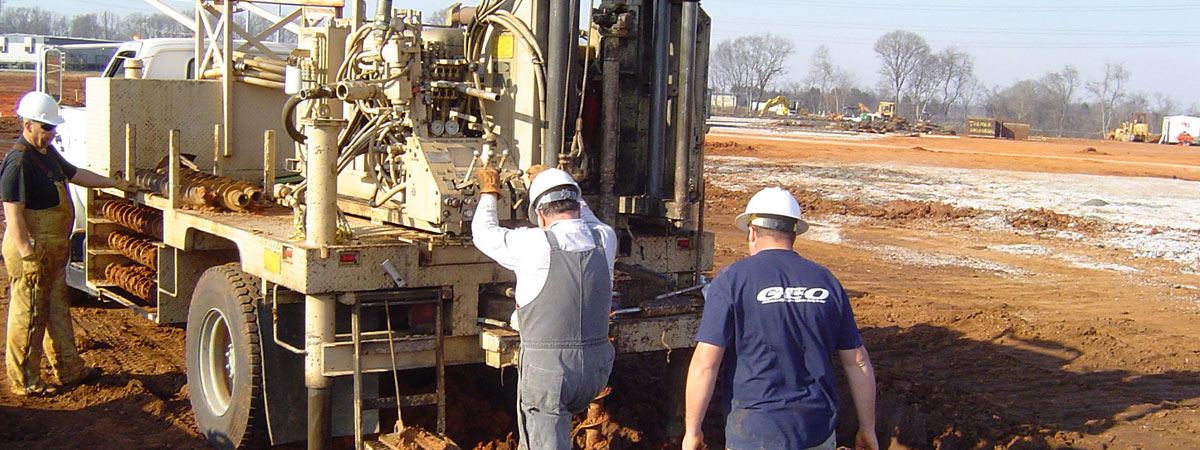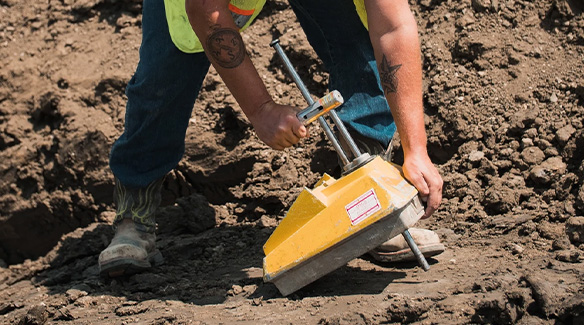The Influence of a Tailings Engineer on Lasting Mining Practices
Wiki Article
Comprehending the Vital Duty of the Geotechnical Sector in Modern Construction Projects and Facilities Development
The geotechnical industry is a keystone of modern building and construction and facilities development, offering critical understandings right into dirt actions that directly influence job outcomes. Through advanced dirt assessments and ingenious design options, geotechnical experts not only make sure architectural stability however likewise address sustainability worries amid advancing ecological requirements. As facilities demands expand and brand-new obstacles emerge, the importance of this field comes to be progressively apparent. What ramifications might these growths have for future tasks and the total safety and security of our built setting?Value of Dirt Analysis
Dirt analysis plays a critical function in the geotechnical sector, offering as the foundation for notified decision-making in building projects. Precise soil evaluation is important for identifying the viability of a site for various types of frameworks, consisting of property homes, commercial structures, and bridges. By evaluating soil make-up, thickness, strength, and moisture web content, designers can anticipate possible obstacles and mitigate dangers connected with ground instability, erosion, and negotiation.The evaluation procedure typically entails a series of tests and observations that provide crucial information regarding the subsurface problems. This information informs the layout and building processes, ensuring that frameworks are improved strong ground with sufficient assistance. Moreover, recognizing the soil account allows engineers to choose ideal construction techniques and products, enhancing resource usage and decreasing costs.
Along with ensuring architectural stability, soil analysis contributes to environmental sustainability. By determining potential contamination or unfavorable impacts on bordering environments, designers can apply techniques to safeguard these natural deposits. On the whole, extensive dirt analysis is crucial in the geotechnical area, underpinning the safety, performance, and ecological responsibility of building jobs.
Secret Geotechnical Methods
A selection of essential geotechnical methods are employed to improve the security and assess and performance of building sites. One fundamental technique is soil sampling and screening, which enables designers to figure out the physical and chemical properties of the ground. This info is critical for making informed choices pertaining to structure style and building and construction methods.Another crucial method is site characterization, which includes the detailed evaluation of soil and rock conditions with methods such as borehole drilling and in-situ screening. Techniques like Standard Infiltration Tests (SPT) and Cone Penetration Examinations (CPT) provide beneficial information on dirt stamina and stratigraphy.
Ground enhancement methods, such as soil stabilization and grouting, are also important in improving the load-bearing capability of weak soils. These techniques can mitigate negotiation and enhance general site conditions.
In addition, incline stability evaluation is important for recognizing prospective landslide risks and ensuring the safety and security of excavations. This analysis often uses mathematical modeling and limit balance approaches to anticipate dirt habits under numerous conditions.
Including these geotechnical methods right into building preparation not just enhances task outcomes however likewise makes certain the lasting sustainability of framework growth.
Impact on Construction Security

In addition, efficient geotechnical design involves carrying out reduction techniques for recognized risks. This might include dirt stablizing strategies, maintaining frameworks, or drainage systems to minimize hydrostatic stress. By addressing these aspects, building and construction teams can lower the chance of crashes and improve worker security.
Furthermore, continuous monitoring of website problems is critical throughout building and construction. Geotechnical tools can give real-time information relating to ground activity and stability, permitting prompt treatments when essential.
In essence, the geotechnical sector plays a pivotal role in guarding construction tasks. By focusing on ground honesty and employing strenuous assessment techniques, the geotechnical sector not just shields the workforce but also adds to the longevity and reliability of created facilities.
Sustainability in Geotechnical Practices

Furthermore, geotechnical engineers are currently employing sophisticated innovations, such as geosynthetics, which enhance soil stability while minimizing the quantity of material required. This not just preserves sources yet additionally causes much less waste generation (consulting engineer). The integration of lasting style principles right into geotechnical design urges the usage of eco-friendly power resources in building processes, additionally decreasing carbon emissions
By conducting these assessments, geotechnical experts can develop methods that mitigate negative results, guaranteeing compliance with ecological laws. Generally, the emphasis on sustainability within geotechnical methods not just contributes to the long life and resilience of infrastructure but additionally advertises an accountable strategy to land and source management.
Future Trends in Geotechnical Engineering
Innovation is driving the future of geotechnical design, as arising methods and innovations improve the sector. The integration of innovative information analytics and expert system is readied to revolutionize website investigation and threat assessment, allowing engineers to make even more enlightened choices based upon real-time data. The usage of geosynthetic products is obtaining traction, using sustainable services that boost dirt security and minimize ecological effect - engineer of record.One more substantial pattern is the adoption of automated and geotechnical engineers robotic systems for tracking and building and construction procedures. These modern technologies not only improve precision however also boost safety by lessening human involvement in dangerous settings. Additionally, the application of Building Details Modeling (BIM) in geotechnical style helps with enhanced collaboration amongst stakeholders, optimizing task shipment and reducing expenses.
As climate adjustment positions brand-new challenges, the sector is progressively concentrating on durability and flexibility in style techniques, making sure infrastructure can hold up against severe weather events. The ongoing trend toward sustainability will certainly drive innovation in green materials and techniques, straightening geotechnical engineering with more comprehensive environmental goals. Jointly, these fads will shape a much more reliable, lasting, and durable geotechnical landscape for future tasks.
Verdict

The geotechnical market is a keystone of modern building and infrastructure advancement, offering vital understandings right into soil actions that directly influence job outcomes. geo tech engineer.Soil assessment plays a crucial role in the geotechnical industry, offering as the foundation for notified decision-making in building and construction tasks. On the whole, thorough dirt assessment is vital in the geotechnical field, underpinning the security, efficiency, and environmental responsibility of construction jobs
Construction safety and security is significantly influenced by geotechnical methods, as the stability and honesty of the ground directly influence the overall safety and security of a building site.In conclusion, the geotechnical market is essential in contemporary building and construction and framework advancement, supplying important evaluations that ensure architectural stability and safety.
Report this wiki page